eCommerce Data Connectors
Explore extensive data connectors for eCommerce businesses
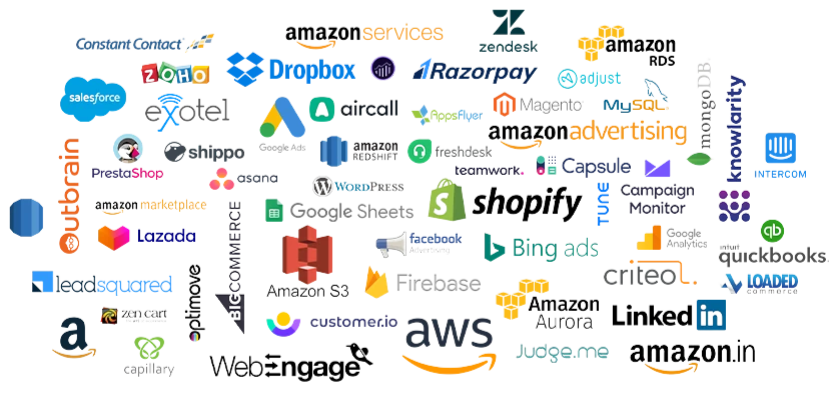

Trusted by Companies Across the Globe




















Categories
Request a ConnectorAll data sources
- Accounting
- Advertising
- Analytics
- Business
- CRM
- Call Center
- Customer Support
- Databases
- eCommerce
- File
- Marketing
- Marketplaces
- OMS/WMS
- Payments
- Reviews
- Shipping
- Subscriptions
- Beta
- Coming Soon
We Believe in Data
0
+
Connectors
0
K+
Pipelines running/hour
0
M+
Data Sync Monthly
What is a data connector?
A data connector is a software tool that allows different systems and software applications to share and exchange data. They are essential for modern businesses because they enable data integration from various sources and systems, allowing for more efficient and effective data management and analysis.
Data connectors also allow businesses to connect to a wide range of data sources, including databases, cloud services, and APIs, making it possible to access and leverage a vast amount of data.
Data connectors play a key role in a modern data stack, which is a set of technologies and tools used to collect, store, manage, and analyze data. They are typically used as part of the data integration layer of the stack, which is responsible for connecting different data sources and making the data available for further processing and analysis.
Why are data connectors essential for business success?
First, let’s understand, with the help of a simple flow diagram, the role of data connectors in a modern business:
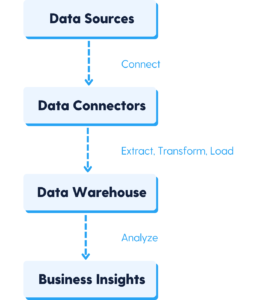
- Data Sources: This is where the raw data resides, such as databases, cloud services, social media platforms, web pages, files, and big data systems.
- Data Connectors: These tools or software allow for the connection and retrieval of data from various data sources. They also perform ELT (Extract, Load) processes in order to prepare the data for further analysis.
- Data Warehouses: These are centralized repositories for storing and managing the data that has been extracted, transformed, and loaded by the data connectors.
- Business Insights: This is where the data is analyzed to generate insights that can inform business decisions and strategies.
The flowchart is a simple representation of the role of data connectors in a modern business. The actual process might be more complex, with multiple data sources, different types of data connectors, and multiple data warehouses and analytical tools.
8 key reasons why data connectors are essential for your business
Data connectors as part of the modern data stack are essential for digital businesses because they help overcome several key challenges, such as:
- Overcoming data silos: Data connectors allow businesses to integrate data from different sources, such as databases, applications, and external services, and make it available in a unified format, thus breaking down silos of data that can impede decision-making and operational efficiency.
- Data ownership: Data connectors facilitate the sharing of data across different teams and departments, allowing everyone to access the data they need to do their jobs, while also maintaining control over who has access to what data.
- Historical data: Data connectors can also help businesses to access and analyze historical data, which can be crucial for understanding trends, patterns, and other insights that can inform business strategy.
- Synergy between teams: Data connectors enable different teams and departments to work together more effectively by providing a unified view of data that they can all access and use.
- Attribution challenges: Data connectors can help businesses to track and attribute different interactions with customers, which can be crucial for understanding how different marketing channels, campaigns, and tactics are impacting business outcomes.
- Unified customer view: Data connectors allow businesses to create a unified view of the customer, which can help to improve customer experience, personalization, and customer engagement.
- Security and compliance: Data connectors can also help businesses secure and protect sensitive data and comply with various regulations and standards.
- Real-time insights: Data connectors can also allow businesses to gain real-time insights from data, which can be crucial for making timely, data-driven decisions.
Benefits of data connectors
As we saw above, data connectors have become essential for streamlining operations across business requirements. Modern data integration/replication platforms like Daton, offer several benefits, such as:
- Easy data integration from various sources such as databases, SaaS applications, and cloud storage.
- Real-time and scheduled data integration capabilities.
- Built-in data transformation capabilities.
- User-friendly design with minimal technical expertise required.
- High scalability to handle large volumes of data.
- Data lineage and auditing features to ensure data accuracy and improve governance.
- Integrations with popular data warehousing and BI platforms such as Snowflake, BigQuery, and Tableau.
- 14-day free trial to test the platform’s features.
- Support and service to ensure a smooth customer experience.
Challenges in building a data connector from scratch
Building a data connector from scratch can be challenging for several reasons:
- Data integration: Connecting to different data sources and integrating the data in a consistent format can be difficult and time-consuming.
- Data quality: Ensuring that the data being pulled is accurate and up to date can be challenging, especially if the data comes from multiple sources.
- Security and compliance: Ensuring the connector is secure and compliant with relevant data regulations can be a significant challenge.
- Performance: Ensuring that the connector can handle large amounts of data and perform well under high load can be difficult to achieve.
- Maintenance and scalability: Keeping the connector updated and maintaining it over time can be challenging, as well as ensuring that it can scale to handle increasing amounts of data.
- Error handling and logging: Developing proper error handling and logging mechanisms is important to troubleshoot and debug issues that may arise when using the connector.
- Testing and validation: Thoroughly testing and validating the connector to ensure that it is working as expected can be a time-consuming and complex task.
- Supporting different data types and formats: Supporting different types of data, such as structured, semi-structured, and unstructured data, as well as different file formats, can add complexity to the connector development.
- Handling data transformation: Data may need to be transformed or cleaned before it can be used, this can be a challenge as it requires a significant amount of processing power and resources.
- User interface and documentation: Developing a user-friendly interface and creating detailed documentation is important to make it easy for users to use the connector, this can be a challenging task, especially if the connector is intended to be used by non-technical users.
With pre-built connectors made by experts, you can overcome these challenges in no time. However, you should factor in whether you will own the data models and whether the platform can provide custom connectors per your requirements.
How can data connectors be used in multi-channel eCommerce?
Data connectors are powerful tools that can help combine siloed information for eCommerce brands and agencies, allowing them to view their business operations and customer interactions comprehensively.
- Automated reporting: Stitching together data from different business functions can be used to automate the reporting process, reducing the time and effort required to gather and analyze data manually. This can help you to quickly identify trends and insights that can be used to improve your business.
- Customer segmentation: Stitching together data across different business functions (such as sales, marketing, and customer service) can be used to create detailed profiles of customers, which can be used to segment them into different groups based on their behavior, preferences, and demographics. This can be used to create targeted marketing campaigns that are more likely to convert, which can help to reduce customer acquisition costs (CAC).
- Inventory management: By stitching together data from different business functions, you can get a better understanding of your inventory levels, sales trends, and customer preferences. This can help you to optimize your inventory management strategy and reduce the risk of stockouts or overstocking.
- Attribution modeling: By stitching together data from different channels and marketplaces, it’s possible to analyze the effectiveness of different marketing campaigns and channels in driving sales and revenue.
- Personalization: By stitching together data from multiple sources, such as browsing and purchase history, it is possible to provide personalized product and content recommendations to customers, increasing customer engagement and sales.
- LTV optimization: By combining data from customer demographics, purchase history, and website browsing behavior, an ecommerce brand can segment customers and optimize marketing campaigns to target the most profitable segments.
- Most profitable customers: By analyzing purchase history and LTV across multiple sales channels, an ecommerce brand can identify their most profitable customers and tailor their marketing efforts to retain and attract similar customers.
- Subscription analytics: By combining data from recurring billing and customer service interactions, an ecommerce brand can analyze the performance of their subscription-based products and make data-driven decisions to improve retention and revenue.
- Predictive churn analysis: By combining data from customer service interactions, purchase history, and website browsing behavior, an ecommerce brand can build a model to predict which customers are at risk of churning. This can help the brand proactively reach out to at-risk customers and offer incentives to keep them engaged.
- Sales forecasting: By analyzing data from multiple sales channels, such as the brand’s website, different marketplaces, and social media platforms, an ecommerce brand can forecast sales and adjust inventory accordingly.
- Fraud detection: Stitching together data from different business functions can be used to identify patterns of fraudulent behavior, such as returns, chargebacks and other transactions that may be associated with fraudulent activity. This can help to reduce financial losses and improve the overall security of your business.
- Dynamic pricing: By stitching together data from different business functions, you can create automated pricing strategies that consider factors such as supply and demand, competition, and customer preferences. This can help you to optimize your pricing strategy and increase your profitability.
By connecting various marketing channels, operations, marketplaces, and customer success tools, businesses can perform advanced analytics and make data-driven decisions to optimize their strategies and improve their performance. With this data, businesses can become investor-ready and demonstrate their growth potential to potential investors.
 Adjust
Adjust
 Aftership
Aftership
 Aircall
Aircall
 Alchemer
Alchemer
 Amazon Ads
Amazon Ads
 Amazon Aurora
Amazon Aurora
 Amazon Brand Metrics
Amazon Brand Metrics
 Amazon Marketing Stream
Amazon Marketing Stream
 Amazon S3
Amazon S3
 Amazon Vendor Central
Amazon Vendor Central
 Anvyl
Anvyl
 Apple App Store
Apple App Store
 AppsFlyer
AppsFlyer
 Asana
Asana
 Ascend
Ascend
 Amazon Redshift
Amazon Redshift
 Awtomic
Awtomic
 Bigcommerce
Bigcommerce
 Bing Ads
Bing Ads
 Bol Ads
Bol Ads
 BolRetail
BolRetail
 Bold Commerce
Bold Commerce
 Bolt Payments
Bolt Payments
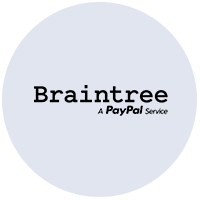 Braintree
Braintree
 Byrd
Byrd
 Calendly
Calendly
 Campaign Monitor
Campaign Monitor
 Capillary
Capillary
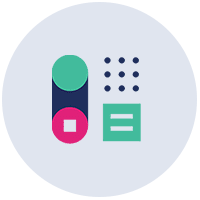 Capsule CRM
Capsule CRM
 Chargebee
Chargebee
 Cin7
Cin7
 ConstantContact
ConstantContact
 Copper CRM
Copper CRM
 Costco
Costco
 Criteo
Criteo
 Customer.io
Customer.io
 Daton
Daton
 DotDigital
DotDigital
 Dropbox
Dropbox
 Easyecom
Easyecom
 Etsy
Etsy
 Exchange Rates
Exchange Rates
 Exotel
Exotel
 3PL Central
3PL Central
 Facebook Ads
Facebook Ads
.png) Fairing
Fairing
 Firebase
Firebase
 Flipkart
Flipkart
 Freshsales
Freshsales
 FreshBooks
FreshBooks
 Freshdesk
Freshdesk
 FreshworksCrm
FreshworksCrm
 FTP
FTP
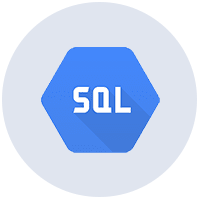 GCP MySQL
GCP MySQL
 Gitlab
Gitlab
 Gladly
Gladly
 Helpscout
Helpscout
 Google Ads
Google Ads
 Google Analytics
Google Analytics
 GCS
GCS
 Google Drive
Google Drive
 Google My Business
Google My Business
 Google Play
Google Play
 GoogleSearchConsole
GoogleSearchConsole
 Google Sheets
Google Sheets
 Gorgias
Gorgias
 HubSpot
HubSpot
 Impact
Impact
 Insightly
Insightly
 Intercom
Intercom
 Inventory Planner
Inventory Planner
 Jira
Jira
 JudgeMe
JudgeMe
 Jungle Scout
Jungle Scout
 Kaufland
Kaufland
 Infusionsoft
Infusionsoft
 Kibo Commerce
Kibo Commerce
 Klaviyo
Klaviyo
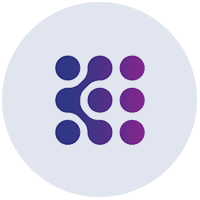 Knowlarity
Knowlarity
 Lazada
Lazada
 LeadSquared
LeadSquared
 LinkedIn Ads
LinkedIn Ads
 Livechat
Livechat
 LoadedCommerce
LoadedCommerce
 Loop Returns
Loop Returns
 LoyaltyLion
LoyaltyLion
 Magento
Magento
 Mailchimp
Mailchimp
 Mercado Libre
Mercado Libre
 Mixpanel
Mixpanel
 MNTN
MNTN
 Monday.com
Monday.com
 MongoDB
MongoDB
 Myntra
Myntra
 MYSQL
MYSQL
 NetSuite
NetSuite
 Northbeam
Northbeam
 Nykaa
Nykaa
 Ohi
Ohi
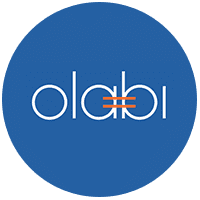 Olabi
Olabi
 OpenCart
OpenCart
 Optimove
Optimove
 Oracle Commerce
Oracle Commerce
 OSCommerce
OSCommerce
 Outbrain
Outbrain
 Paypal
Paypal
 PayU
PayU
 PetSmart
PetSmart
 Pingdom
Pingdom
 Pinterest
Pinterest
 PipeDrive CRM
PipeDrive CRM
 PostgreSQL
PostgreSQL
 PrestaShop
PrestaShop
 PushEngage
PushEngage
 QuickBooks
QuickBooks
 Razorpay
Razorpay
 RDSSQLSERVER
RDSSQLSERVER
 Reamaze
Reamaze
 ReCharge Payments
ReCharge Payments
 RetaiLink
RetaiLink
 ReviewMonitoring
ReviewMonitoring
 Salesforce
Salesforce
 Salsify
Salsify
 SEM Rush
SEM Rush
 SendGrid
SendGrid
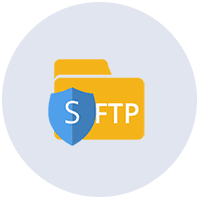 SFTP
SFTP
 Shipbob
Shipbob
 ShipHero
ShipHero
 Shippo
Shippo
 Shiprocket
Shiprocket
 ShipStation
ShipStation
 Shoppe
Shoppe
 Shopify
Shopify
 Smartrr
Smartrr
 SnapchatAds
SnapchatAds
 SpreeCommerce
SpreeCommerce
 Sprout Social
Sprout Social
 Stamped.io
Stamped.io
 Sticky.io
Sticky.io
 Stripe
Stripe
 Subscrimia
Subscrimia
 SugarCRM
SugarCRM
 SurveyMonkey
SurveyMonkey
 Survicate
Survicate
 Taboola
Taboola
 Tally
Tally
 Target
Target
 Teamwork
Teamwork
 Time Doctor
Time Doctor
 TMall
TMall
 TUNE
TUNE
 Unbounce
Unbounce
 UniCommerce
UniCommerce
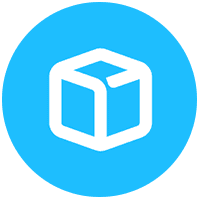 Upscribe
Upscribe
 Vinculum
Vinculum
 Walmart
Walmart
 Wayfair
Wayfair
 WebEngage
WebEngage
 Webhooks
Webhooks
 Whole Foods
Whole Foods
 WooCommerce
WooCommerce
 WooCommerce SQL
WooCommerce SQL
 Wordpress
Wordpress
 Xero
Xero
 Yahoo Gemini
Yahoo Gemini
 Yotpo
Yotpo
 Zen Cart
Zen Cart
 Zendesk
Zendesk
 Zendesk Chat
Zendesk Chat
 Zoho CRM
Zoho CRM
 Zoho Desk
Zoho Desk
 Zoom
Zoom









